Advantages Of Artificial Intelligence
Overview
Artificial intelligence (AI) is a rapidly expanding field of technology that can potentially change how we live our lives. Artificial intelligence (AI) is the capacity of machines to carry out tasks that ordinarily require human intelligence, such as language translation, speech recognition, visual perception, and speech perception. AI has several advantages over traditional approaches to problem-solving, such as speed, accuracy, and scalability. This article will discuss the main components and characteristics of AI, its applications, and the advantages it provides.
Main Components and Characteristics of AI
Feature Engineering
Feature engineering is a crucial component of Artificial Intelligence (AI) that involves selecting and transforming raw data into features we can use for machine learning algorithms. In simpler terms, feature engineering is the process of preparing data for AI systems to use for prediction or classification tasks.
For example, consider a dataset containing information about customers' shopping habits, such as age, gender, income, and shopping history. Feature engineering would involve transforming this raw data into features we can use to train an AI system to predict which products a customer will most likely buy. This might involve creating new features, such as a customer's average spend per visit, or combining existing features to create more meaningful ones, such as purchasing power.
Feature engineering is important because the quality of features used for training an AI system can significantly impact its accuracy and performance. Well-designed features can improve the ability of an AI system to generalize and make accurate predictions on new data, while poorly designed features can lead to overfitting or underfitting.
For example, let's consider a machine learning algorithm trained to identify fraudulent credit card transactions. Suppose the features used for training the algorithm do not capture the relevant information, such as the transaction's location or the transaction size. In that case, the algorithm may not be able to identify fraudulent transactions accurately.
Feature engineering involves several techniques, such as feature selection, feature transformation, and feature creation.
- The feature selection process involves choosing the essential features of the task at hand.
- Feature transformation involves transforming the raw data into a more suitable form for machine learning algorithms.
- Feature creation involves creating new features from existing ones, such as combining two features to create a new one.
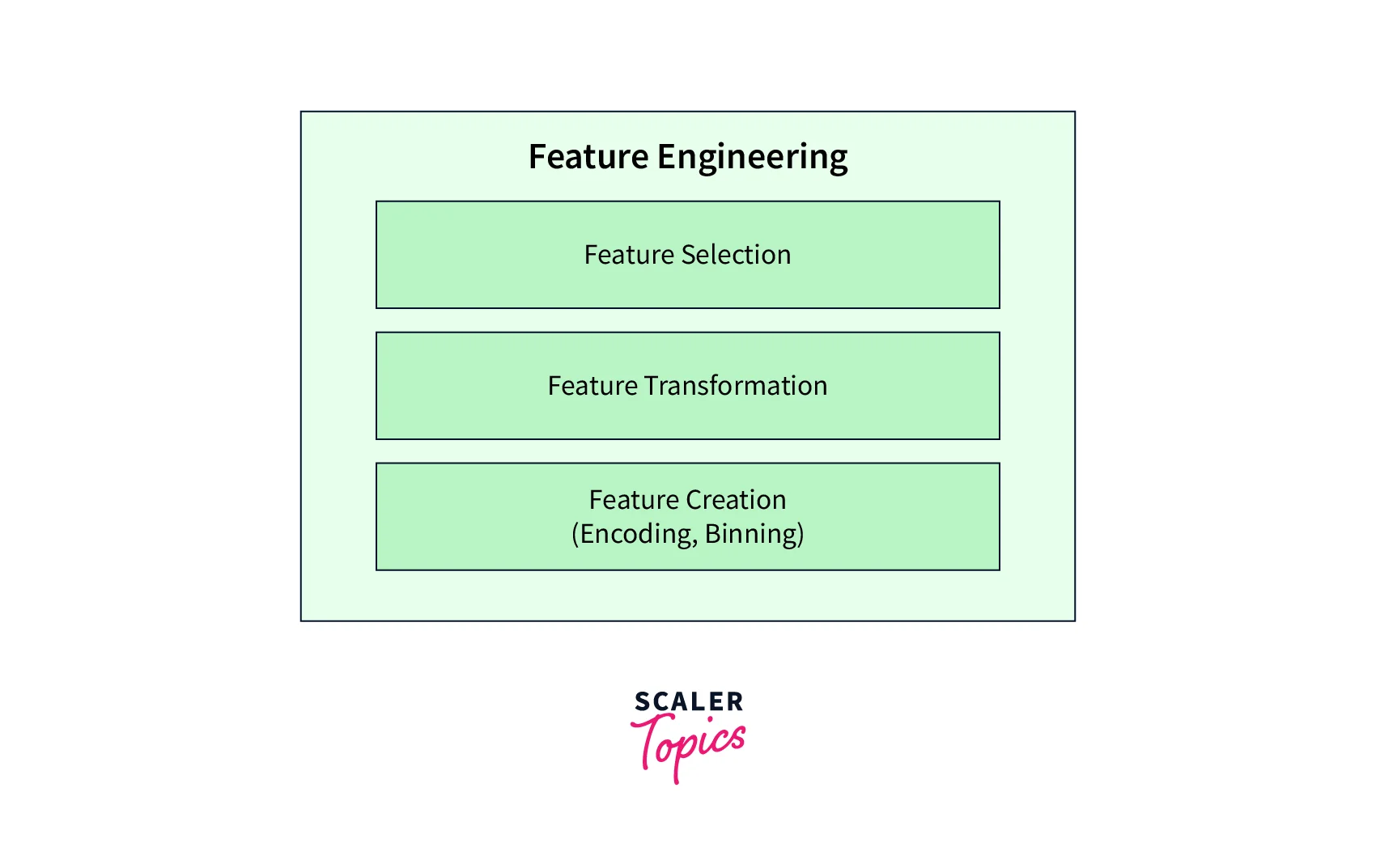
Artificial Neural Networks
Artificial Neural Networks (ANNs) are a key component of Artificial Intelligence (AI) modelled after the human brain's structure and function. ANNs are used for tasks such as image recognition, speech recognition, and natural language processing.
ANNs consist of interconnected nodes or neurons that process information. Each neuron in the network gets information from other neurons, processes the information mathematically, and then transmits the results to other neurons. The output of each neuron is determined by its activation function, which determines the strength of the signal that the neuron sends to other neurons in the network.

For example, let's consider an image recognition task. ANNs can be trained to recognize images by analyzing the patterns of pixels in the image. Each pixel in the image is represented as an input to the network, and the network processes this input through a series of neurons to recognize the object in the image.
Backpropagation is a technique for training ANNs that involves reducing the difference between the network's anticipated output and actual output by varying the weights of the connections between neurons. The weights of the connections are updated using a mathematical optimization algorithm, such as stochastic gradient descent.
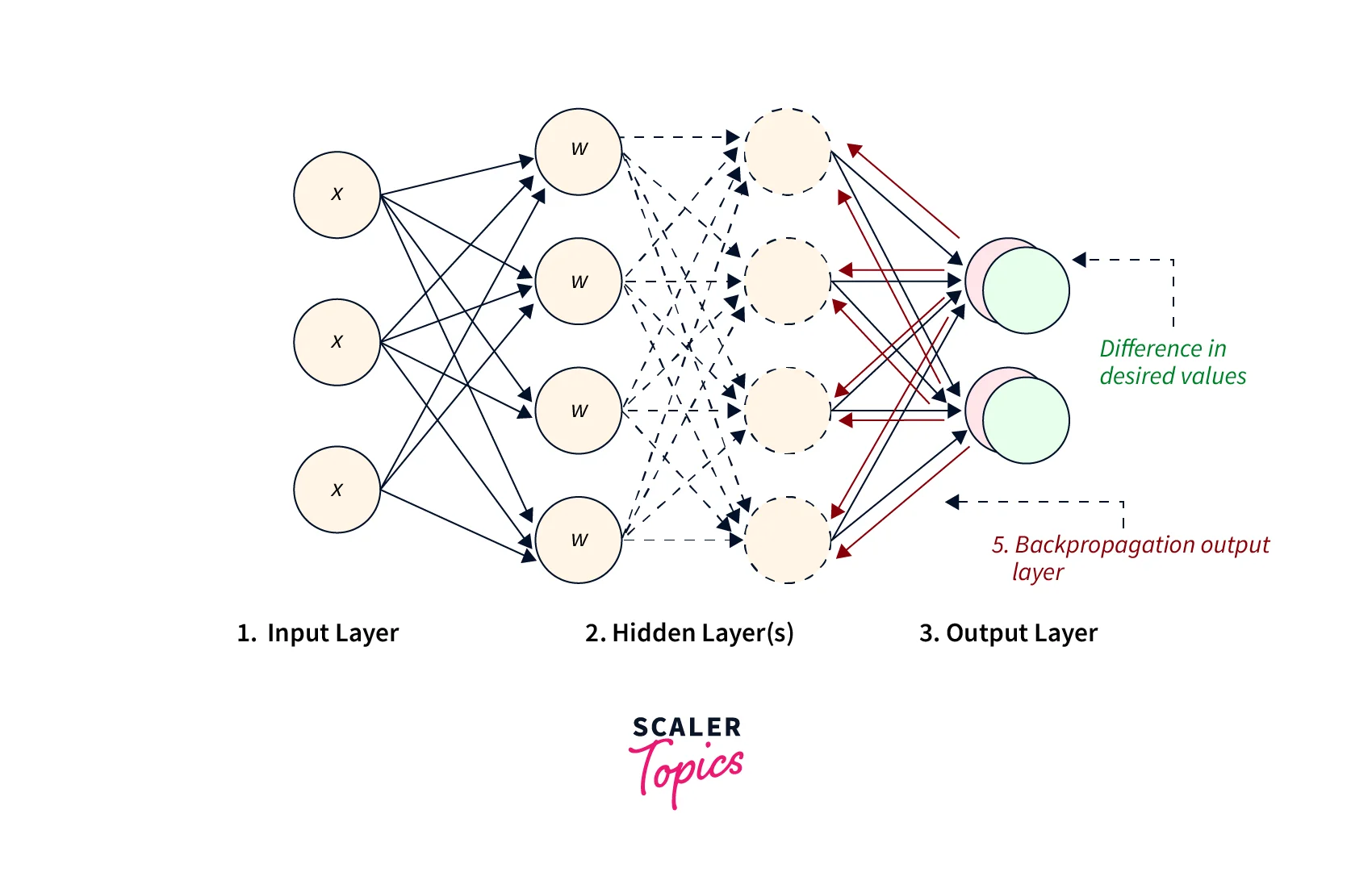
One of the advantages of ANNs is their ability to learn from data and generalize to new situations. For example, ANNs can be trained on a large dataset of images to recognize different objects and then be used to recognize new objects that were not present in the training dataset. ANNs can also learn to recognize patterns that are too complex for humans to identify.
Another advantage of ANNs is their ability to operate in real time. ANNs can process information quickly and can be used for tasks such as autonomous driving or real-time speech recognition.
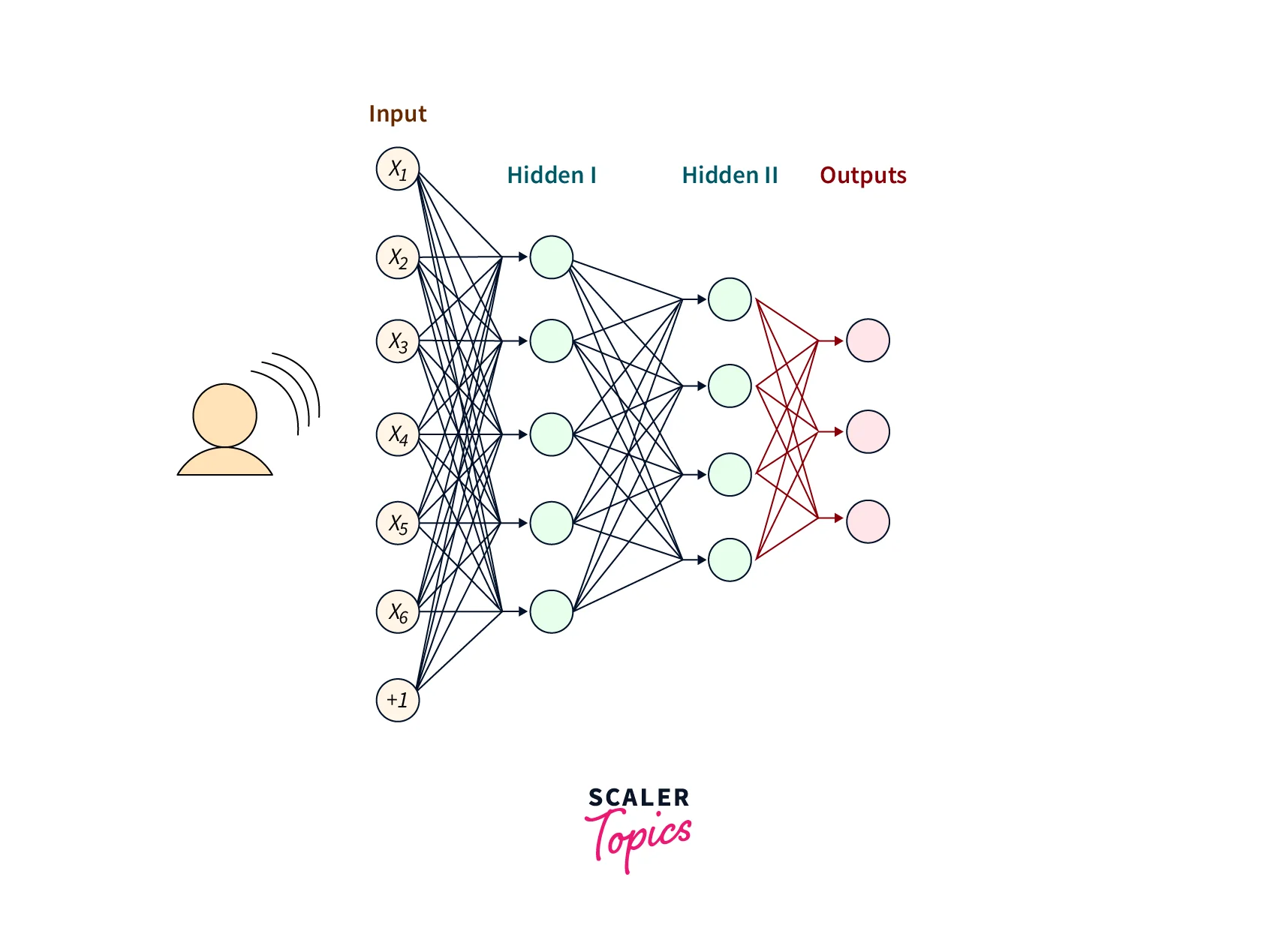
Deep Learning
Deep Learning is a subfield of Artificial Intelligence that uses Artificial Neural Networks (ANNs) to perform complex tasks such as image recognition, speech recognition, and natural language processing.
Deep Learning involves training ANNs with multiple layers of neurons, allowing the network to learn more complex patterns and relationships between the input and output. Training a deep neural network involves adjusting the weights of the connections between neurons using a process called backpropagation.
One example of deep learning in action is self-driving cars. Deep neural networks can be trained on a large dataset of images and other sensor data from a car to recognize objects and make decisions about navigating the environment. The neural network can learn to recognize objects such as other cars, pedestrians, and traffic lights and decide when to slow down or change lanes based on that information.
Another example of deep learning is natural language processing. Deep neural networks can be trained on huge text datasets like books or articles to learn the patterns and connections between words and phrases. This allows the network to generate more accurate and contextually appropriate responses in chatbots or virtual assistants.
Over conventional machine learning methods, deep learning has a number of benefits. Deep neural networks don't require explicit feature engineering to learn from raw data. This enables the training of models on massive datasets containing complicated and unstructured data, such as voice or images.
Applications of AI
Ethical Gene Editing
Ethical gene editing is an important application of Artificial Intelligence (AI) that can potentially revolutionize the field of genetics and medicine. Gene editing refers to the ability to modify the DNA of living organisms, including humans, to correct genetic diseases, enhance desired traits, or prevent the transmission of genetic disorders to future generations.

AI can play a significant role in ethical gene editing by providing tools and techniques to analyze and manipulate genetic data with high precision and accuracy. One of the key advantages of using AI in ethical gene editing is its ability to analyze vast amounts of genetic data quickly and accurately. AI algorithms can process large datasets of genomic information to identify specific genetic mutations or anomalies associated with diseases.
We can use this information to develop targeted gene editing strategies to correct or eliminate problematic genes. Furthermore, AI can also help predict the potential outcomes of gene editing interventions. This allows scientists and researchers to make informed decisions about the ethical implications of gene editing.
Intelligent Disaster Response System
Intelligent disaster response systems are one of the vital applications of Artificial Intelligence (AI) that have the potential to significantly improve emergency management and response during natural disasters, such as earthquakes, hurricanes, wildfires, and floods. Some of its key features include:
- These systems leverage AI technologies to collect, analyzeand process large amounts of data in real-time to support decision-making and enhance disaster response efforts.
- One of the key components of an intelligent disaster response system is data collection and analysis.
- AI algorithms can collect and analyze data from various sources, such as social media, satellite imagery, sensors, and other IoT devices, to provide valuable insights about the disaster's location, magnitude, and impact.
- For example, during a hurricane, AI can analyze weather patterns, storm surge data, and evacuation routes to provide real-time information to emergency responders, allowing them to make informed decisions and allocate resources efficiently.
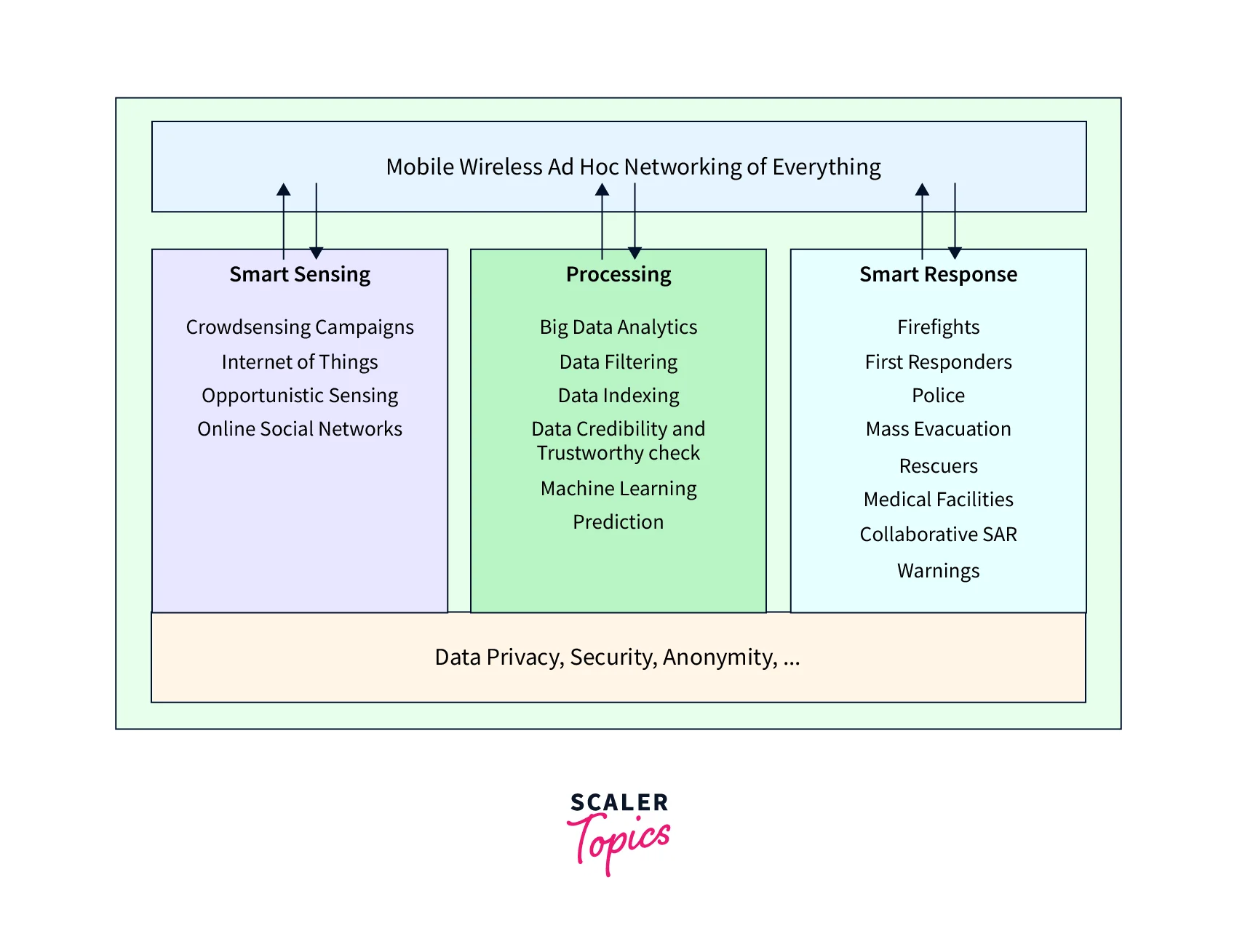
Prediction and Forecasting
AI can also play a significant role in predicting and forecasting natural disasters. By analyzing historical data and using machine learning algorithms, AI can predict disaster likelihood, intensity, and trajectory. For instance, AI can analyze seismic data to predict the occurrence of earthquakes or analyze weather data to forecast the path of hurricanes. These predictions can help in early warning systems and evacuation planning, allowing communities to take preventive measures and reduce the impact of disasters.
Fair Resource Allocation
Another critical aspect of intelligent disaster response systems is resource allocation. During a disaster, the availability of resources, such as emergency services, medical supplies, and shelters, is crucial for effective response and relief efforts. AI can optimize the allocation of resources based on real-time data, such as population density, infrastructure damage, and the severity of the disaster. For example, AI algorithms can analyze social media posts, emergency calls, and sensor data to identify areas that need immediate attention and prioritize resource allocation accordingly.
Post Disaster Recovery
We can use AI in post-disaster recovery and reconstruction efforts. AI can support decision-making in the reconstruction process by analyzing data on damage assessment, infrastructure needs, and population displacement. For example, AI can analyze satellite images to assess the extent of damage to buildings and infrastructure or use natural language processing algorithms to analyze social media posts to identify areas where aid is needed the most.
Recommendation Systems
Recommendation systems are a popular application of Artificial Intelligence (AI) that provide personalized suggestions to users for products, services, content, or other items of interest. These systems leverage AI algorithms to analyze user behaviour, preferences, and historical data to generate recommendations that cater to individual needs, preferences, and interests.

One of the main components of recommendation systems is data collection and analysis. AI algorithms collect and analyze vast amounts of data, such as user browsing behaviour, purchase history, search queries, social media activity, and other relevant data points, to understand user preferences and behaviour. For example, a recommendation system for an e-commerce website may collect data on user purchases, browsing history, and product ratings to generate personalized product recommendations.
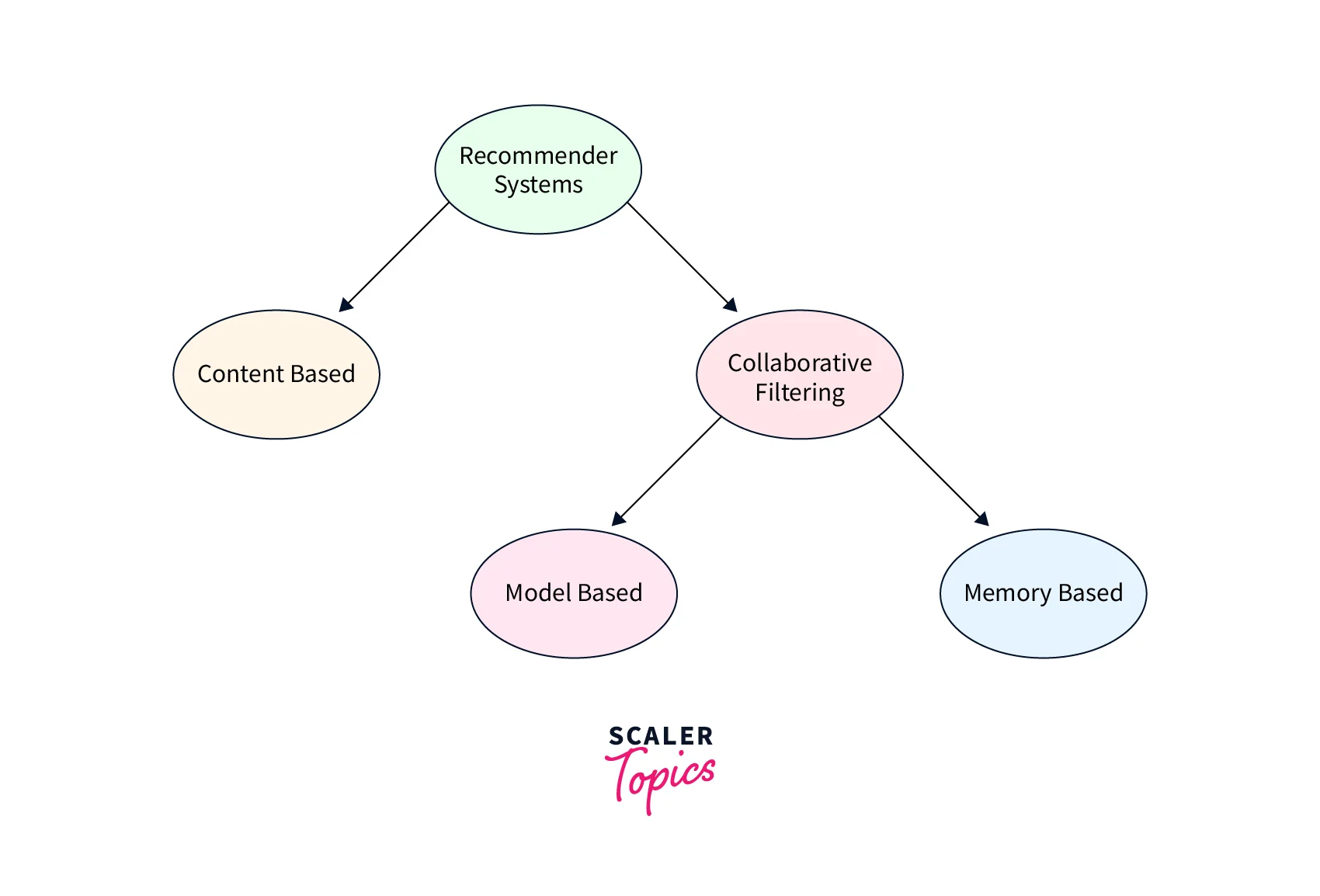
Collaborative Filtering
AI algorithms use various techniques to analyze and process this data to generate recommendations. One commonly used technique is collaborative filtering, which involves analyzing user behaviour and preferences to identify patterns and similarities among users.
For example, if two users have similar browsing histories and purchase patterns, the recommendation system may suggest similar products to both users.
Content-Based Filtering
Content-based filtering involves analyzing the features or attributes of items, such as genre, category, or keywords, and recommending items with similar attributes to users who have shown an interest in similar items in the past.
Personalization
Personalization is a key advantage of recommendation systems powered by AI. These systems can provide tailored recommendations based on individual user preferences, behaviour, and interests, allowing users to discover new items that match their interests and preferences.
For example, streaming services like Netflix use recommendation systems to suggest personalized content based on a user's viewing history and ratings, helping users discover new shows and movies that they may not have found otherwise.
Improved Customer Engagement and Satisfaction
Recommendation systems using AI provide improved customer engagement and satisfaction. These systems can enhance user experience, increase engagement, and improve customer satisfaction by providing personalised recommendations.
For example, e-commerce websites that use recommendation systems to suggest relevant products to users are more likely to generate repeat purchases and loyal customers.
Better Inventory Management
Recommendation systems can help businesses in inventory management and reducing wastage. By analyzing user behaviour and preferences, these systems can provide insights into popular products, demand patterns, and trends, helping businesses optimize their inventory management and reduce the wastage of unsold products.
In addition to e-commerce and entertainment, recommendation systems are also used in various other domains, such as online advertising, news and content recommendation, social media, and healthcare. For example, online advertising platforms use recommendation systems to suggest relevant ads to users based on their interests and browsing behaviour. News websites use recommendation systems to suggest personalized news articles based on user interests and reading habits.
Advantages of Artificial Intelligence
Reduction in Human Error
AI systems can perform tasks with greater accuracy and consistency than humans, which can significantly reduce the risk of errors and improve output quality. For example, we can use it to identify defects in manufacturing processes and prevent faulty products from reaching the market.
Zero Risks
We can use AI in hazardous environments, such as nuclear power plants, oil rigs, and space exploration, where human life is at risk. AI systems can operate in these environments without endangering human lives, making them an ideal solution for such applications.
24x7 Availability
AI systems can operate around the clock without needing breaks or rest, making them ideal for applications that require continuous operation. For example, we can use AI to monitor and analyze large amounts of data in real-time, such as financial markets or social media activity.
Digital Assistance
We can use AI to develop digital assistants that can perform tasks such as scheduling appointments, sending emails, and making phone calls on behalf of humans. Digital assistants can help humans save time and increase productivity.
New Inventions
We can use AI to develop new inventions and technologies to revolutionize various industries. For example, we can use AI to create autonomous vehicles, significantly reducing the number of accidents caused by human error.
Unbiased Decisions
AI systems can make decisions without being influenced by biases or personal opinions, making them ideal for applications that require objectivity and fairness. For example, we can use AI to identify and mitigate recruitment bias.
Perform Repetitive Jobs
AI can be used to perform repetitive tasks, such as data entry or quality control, which can be monotonous and boring for humans. This can free up humans to perform more creative and complex tasks.
Daily Applications
AI can be used to perform repetitive tasks, such as data entry or quality control, which can be monotonous and boring for humans. This can free up humans to perform more creative and complex tasks.
AI in Risky Situations
We can use AI in risky situations, such as firefighting or search and rescue operations, where human lives are at risk. AI systems can analyze data from sensors and cameras to provide real-time information and help humans make informed decisions.
Faster decision-making
AI systems can analyze large amounts of data in real-time and make decisions quickly, significantly improving the speed and efficiency of decision-making. For example, we can use AI to identify and respond to cyber threats in real-time.
Pattern identification
AI systems can analyze large amounts of data and identify patterns and trends that humans may be unable to detect. This can be useful in various applications, such as fraud detection, market analysis, and medical diagnosis.
Medical Applications
We can use AI in various medical applications, such as disease diagnosis, drug discovery, and personalized medicine. AI can analyze large amounts of patient data and identify patterns and trends to improve the accuracy and efficiency of diagnosis and treatment.
Conclusion
- Artificial Intelligence is a rapidly growing field of technology that is changing how we live and work.
- AI has several advantages over traditional approaches to problem-solving, such as speed, accuracy, and scalability.
- AI is used in various applications, such as gene editing, disaster response, recommendation systems, and medical applications.
- AI provides several advantages, such as reducing human error, zero risks, 24x7 availability, digital assistance, new inventions, unbiased decisions, performing repetitive jobs, daily applications, AI in risky situations, faster decision-making, pattern identification, and medical applications.
- AI is anticipated to transform numerous industries and raise the human quality of life as it develops and evolves.
